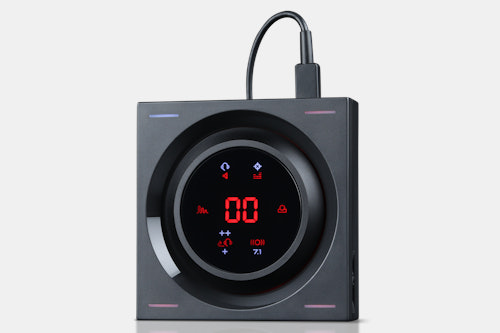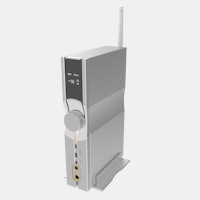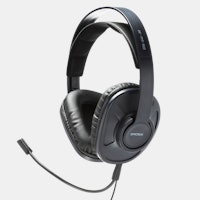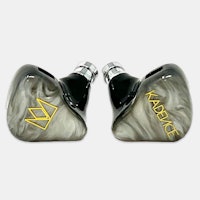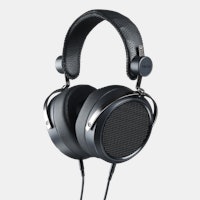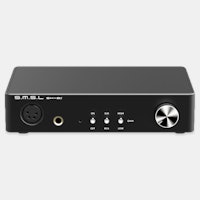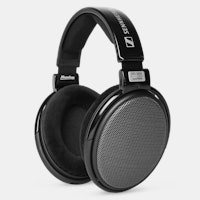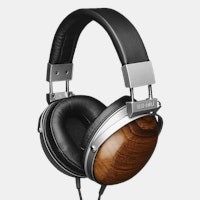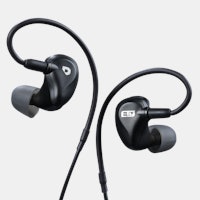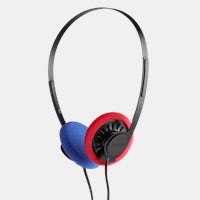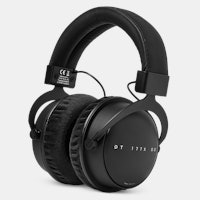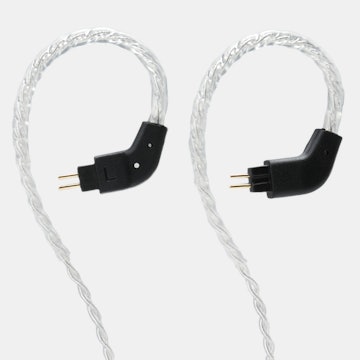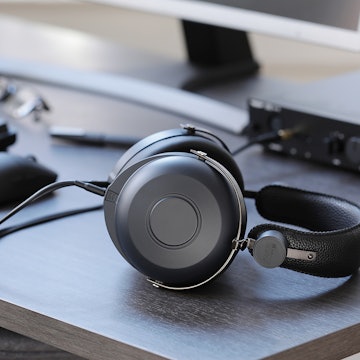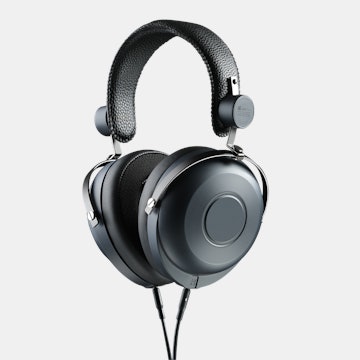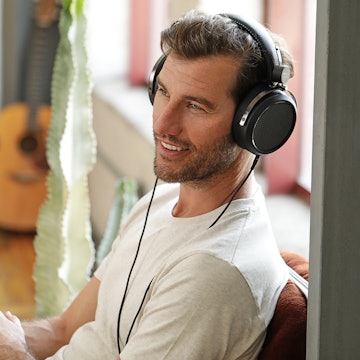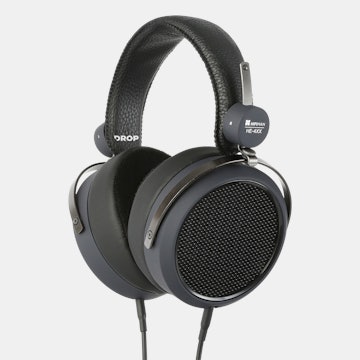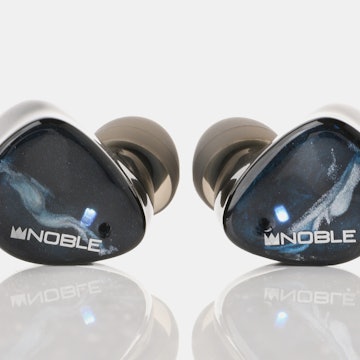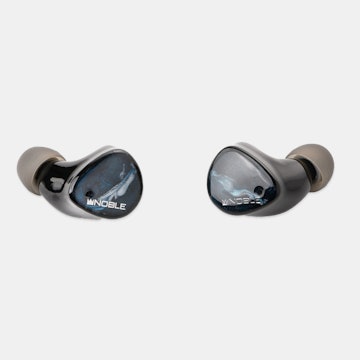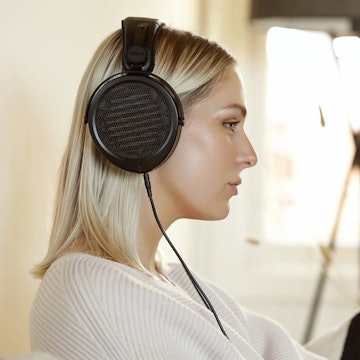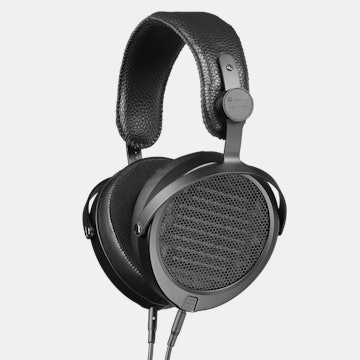Click to view our Accessibility Statement or contact us with accessibility-related questions

















EPOS GSX 1000 2nd Edition External Sound Card
EPOS GSX 1000 2nd Edition External Sound Card
bookmark_border
Where's the price?
To negotiate the best possible price for our customers, we agree to hide prices prior to logging in.
282 requests
Product Description
Giving gaming setups worldwide a huge audio advantage, the GSX 1000 External Sound Card from EPOS has become a mainstay in the signal chains of many gamers. Now, the brand is back with second generation of this popular gaming DAC—and this version sees several upgrades Read More

search
close
Sort by: Newest
keyboard_arrow_downgpk_og
6
Feb 7, 2023
Well just my 2 cents ( I own rev 1), the Microphone upgrade was sorely needed, V1 should never have been limited to "tape quality" (16KHz), it sounds just fine but you can tell it's a tad compressed.
The virtual 3D however is the real selling point, sounded better to me than many SW solutions I tried w/ my PC38x, see my review for more details.
Q: The Headset Voice Earphone (communication device for voice chat) is also Tape Quality on V1, is it upgraded on V2 along w Mic to 16/48?
Q: The Headset Voice Earphone (communication device for voice chat) is also Tape Quality on V1, is it upgraded on V2 along w Mic to 16/48?
Aurian
0
Nov 5, 2022
Quasi Update. I filmed this a few days ago but Youtube only finished the upload today. A less than quick blast at the pushing of a lackluster product on Drop: https://youtu.be/herV-Tp8JAU

edmund_yung
0
Nov 5, 2022
Instead of getting 7.1 sound card such as this or Sound Blaster, I just installed Equalizer APO and HeSuVi to use my on-board Realtek AC1220 to receive 7.1 signal from games and output them to my headset. It can't do Dolby ATMOS, but neither does this GSX1000 mk2, to simulate ceiling speakers.
Wyvern
6
Nov 2, 2022
I had one of the first-gen GSX1000 models for about a year. Completely lackluster product that was about as good as my computer's default sound. It was basically a glorified audio jack extender with a few extra audio settings and a cool-looking dial (and, for that matter, one that couldn't even accurately match the system's audio. The display only went up by intervals of two, so if you wanted your audio at 25, it would just say 26 instead). Not even worth $100, much less $200. And if you really want studio-grade audio quality, you should get something like a Scarlett - it'll cost less, and give you the opportunity to plug in some real equipment.
Honestly, like many others have said, it sucks to see Drop peddling garbage like this as if it's high-quality.
(Edited)

Evshrug
4145
Keyboard Club Member
Nov 2, 2022
This is a DSP/DAC/ADC/Amp/interface… for everyone considering comparisons to USB products, make sure you’re comparing to other products that also offer spatial audio processing, remote control, and a nice mic input. The Microphone Input was upgraded to 16-bit, 48 kHz according to the email, I think this and the original have a “hi res stereo” mode (that I used once or twice with my 1st Gen GSX1000, and didn’t bother with again). Most game sound files are compressed more than “CD Quality” for the sake of quicker processing by the computer.
Edit: from the Gen 1 GSX 1000 manual, it looks like the max output to headphones or speakers is 24-bit/96 kHz:
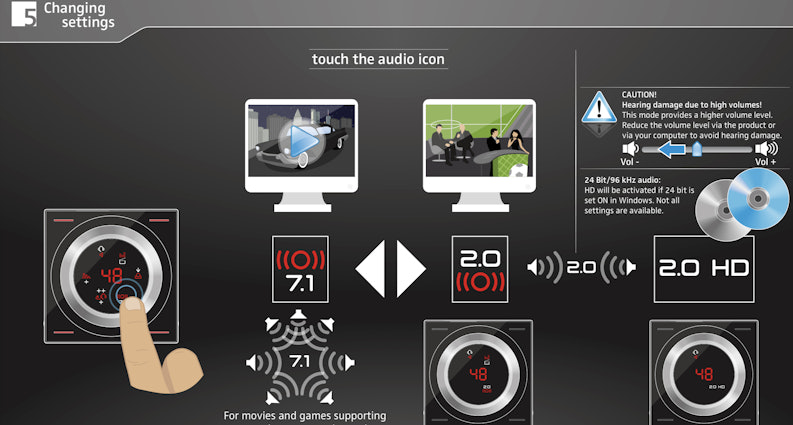

(Edited)

Evshrug
4145
Keyboard Club Member
Jul 7, 2023
DKizzyAh ok. Bummer, but 16-Bit 44 kHz is more than just pretty good, that (or 48 kHz) is the CD standard. The GSX1000 isn’t going to compete with a Chord Mojo 2 or even a Cayin RU6, but imo it’s surround capabilities are going to make it better at gaming than a standard DAC, also movies with noticeable surround (not in every movie, lol) and still perform more than decent with music and high sensitivity headphones like the PC38X or HD 58X Jubilee.
I have the V1 from when EPOS was still in the joint venture with Sennheiser, and sometimes it comes in handy (it’s nice that it’s a Mac compatible surround processor!). I’d personally want something more juicy (more current) for the HD 6xx, but it shouldn’t be worse than a typical smartphone dongle in this regard.
(Edited)

SpeakFriend
13
Nov 2, 2022
I think it's time to unsubscribe from Drop's marketing emails, if this is what they actually consider to be the "Industry's top sound card."

Evshrug
4145
Keyboard Club Member
Nov 5, 2022
I haven’t heard Super X-Fi (I’m excited about the potential from the personalization!), but the Sennheiser Binaural Engine did a superior job of in-front-localization for me than SBX or THX algorithms from Creative. I mainly used my GSX 1000 with a PC37X, which was a great match (IMO sound quality was superior on that setup than the flagship Creative X7 with stock op-amps), but for more power-hungry headphones I connected the GSX 1000’s headphone out port to an external amp. With the GSX at 💯% volume (or close to it) and volume controlled by my separate amp (Cavalli Liquid Carbon) and an HD 800, I was impressed while gaming!
But, sometimes you don’t want overkill, so I usually used it with my PC37X.
Rambone
111
Nov 6, 2022
EvshrugYou are definitely not missing out on anything with the Super X-Fi (SXFI) feature if you ask me. It's one of those love it or hate it deals IMO and definitely needs to be configured correctly to enjoy full benefit. Incorrectly configured it sounds terrible. which means you need to take photos of your ears so the software can map them and select a headphone/profile from a limited but generous list of popular headphones. Takes some effort to get it right but you can certainly be rewarded. I think Creative has a few SXFI certified headphones which they know will pair well but you can pretty much use whatever you want but results can wildly vary.
Creative made quite a few changes since the X7 with the G6 and even the GC7 but at the end of the day what you value most the GSX 1000 happens to do those things very well and is a purpose-built gaming product to accommodate gaming headphones (basically EPOS headphones) where-as the G6 and GC7 can one up and go beyond just being gamer-gear and be a respectable dac/amp for non-gaming headphones for those that might want to branch out but might not want to dump a bunch of money into separate audio gear beyond maybe one nice pair of headphones, that might even be Sennheiser/drops own 6xx/58x headphones. Not saying the GSX 1000 won't 'work' or even sound good with them but the G6/GC7 is the better choice and IMO does sound better in general over the original GSX 1000, haven't listened to the GSX1000 2nd edition to comment.
Back to your software comment, wishing that it would be available outside of these gaming all in ones. The software, amount of customization, features and convenience is exactly why I still buy things like the G6 or the GSX1000 despite having about a dozen+ dacs/amps/AIOs. It was just a little disheartening to see that the 2nd edition GSX1000 is not going to take my aging G6's throne as the ultimate gaming+music AIO anytime soon and is still going for $200+. I will most certainly buy the next generation of G6 in a heartbeat which is most certainly not the X4 or the GC7 as of this writing.

ChiangYeh0208
1
Nov 1, 2022
Hmmm... I don't understand the why folks here think that human beings need sampling rates higher than 44.1KHz or bit depth more than 16. Let's start with sampling frequency. Human hearing range is 20Hz to 20KHz. The Nyqust rate is therefore 20KHz * 2 = 40KHz. There is no more audible information that can be gained by sampling above that frequency. Why the higher sampling rate? It's because we electrical engineers can't design perfect anti-aliasing filters, (I'll spare you the math). It's easier to work with 48KHz than 44.1KHz, and even easier with 96KHz sampling rates; however, there is a point of diminishing return above 48KHz.
Human hearing has a audible threshold of 0dB SPL and pain threshold of 120dB. Given that every bit gives you 6dB, 16 bits will produce a dynamic range of 96dB. The most demanding symphonic music could touch maybe 30dB of dynamic range (difference between silence and loudest sounds). If you like it louder and destroy your hearing, you can always amplify the signal which will increase the noise floor, which is probably not audible above what whirring noise your computer fan is already producing, which is around 40dB for a quiet one.
If you can hear a difference between DACs, it's more likely due to internal design (sigma-delta vs ladder, etc) manufacturing, (caps, resistors, etc), or improper calibration of the signal chain.
Aurian
0
Nov 2, 2022
ChiangYeh0208A: I can tell a difference
B: If I can tell a difference, other people can tell a difference.
C: average human hearing is not total human hearing.
D: quote/unquote "Average" human hearing is the average taken of a series of tests that may or may not have disclosed the participants of those tests. In other words, "Average" human hearing relies on tests with no significant sampling size, no significant population density, nor any other significant factors enabling the establishment of a baseline to be average against.
E: average medical tests are generally only conducted on those with hearing issues, generally not those who can pass a hearing test.
F: average medical tests generally do not encompass total tonal reproduction capability of the human ear. The tests are predicated on specific frequencies, not tonal compounding of multiple frequency responses.
G: Oh please go look up "Head Related Transfer Function" before posting this kind of tripe.
Point blank: 16bit @ 48kHz is completely unacceptable for a modern product.
(Edited)

ChiangYeh0208
1
Nov 2, 2022
AurianAbout HRTF, are you talking about this stuff: https://www.freepatentsonline.com/y2005/0147261.html, (shameless plug, I am the inventor of that patent).
HTRF has NOTHING to do with sound reproduction in the signal chain, but everything to do with sound perception. It is how your body's contribution in an audio environment. Most stereophonic recordings don't take it into consideration and the sound reference point is approximated based on your physical relationship to the speakers, the walls of the room, and frequency/pressure level of the sound; i.e. a complete mess! It's a little easier to approximate in a specially designed headphone or a relatively controlled environment, e.g. a large, quiet conference room at low volume, (using a gadget like my invention...)
Human hearing deteriorates with age, if you are under 17, you *may* be able to hear around 10Hz to 17KHz. If you claim to be able to hear above 20KHz, it's probably in your head. There are well studied research activities on this topic. I tried my hands in designing a couple of DACs that has theoretical advantages in perceptual quality, (like this one: https://patents.google.com/patent/US7633417). There was no statistically significant perceptual difference between that design vs a reference 16-bit, 48KHz reference one, equally calibrated for sound level, in a double blind listening test conducted in an anechoic chamber.
I don't like arguing for argument's sake. I presented scientific data and offered some hard learned lessons when I was working in this field. None of these hearing tests are performed on the hearing challenged, btw. That would render the tests completely invalid. I worked with our resident psychologists who conducted all the tests at Nortel Audio Labs and later at Bell Labs.
Aurian
0
Nov 1, 2022
Personally? This is a hard pass. Supported sample rates: 16-bit / 48 kHz (7.1), 16-bit / 48 kHz?
Seriously? That's supposed to be audiophile/gamer quality audio?
At $200????
No.
Just. NO.
24bit/96kHz @ 7.1 would be the baseline here.
For $200 I'd be expecting a better quality than that, e.g.: 24bit/192Hz @ 7.1
Put bluntly a card that is handed it's rear end on a silver platter by a decade and half old Chaintech Via Envy has no business in any gamer's lineup.
Rambone
111
Nov 1, 2022
Kind of depressing specs. Looks nice, kinda sleek and I like the touchscreen stuff but feature wise I can get most of that stuff with a better spec (Edit: and cheaper) Creative GC7 which does all the same things but can allow a wider range of headphones. The G6 would be better yet if you don't mind having to deal with everything within the software.
(Edited)

Evshrug
4145
Keyboard Club Member
Nov 2, 2022
RamboneI’d like to try a GC7 some day, though I’m not sure I’m ready for the streamer controls (as I mainly keep my games on console). I have the older G5 and E5, and I used to have the Soundblaster X7 (wrote the first review on the internet about it!), but the G5 and E5 have been outperformed by better sounding, smaller devices (like, my Bluewave GET and an iFi Go I tried recently at a headphone meet sounds better than the G5 and those are tiny, though to be fair they don’t offer the software suite to customize the sound). The G6 apparently had a superior amplifier than the G5, I wonder (hope?) a similar upgrade happened between the GSX 1000 generations too.
Rambone
111
Nov 2, 2022
EvshrugThe GC7 is actually a pretty handy device. The left knob controls overall volume. The Right knob allows you to adjust the chat volume, so if you get a loud squeaker on voice chat you can turn him down like you would be able to on Playstation 5's chat mixer. Center knob and buttons around it allow you to make finer adjustments to bass, treble, surround and mic volume which is super handy and convenient, especially while in game. Over all I really like the GC7, the only thing I don't really like is the SXFI holographic effect but luckily you don't need it and the scout mode for FPS competitive gaming is unmolested and present. The G6 is a little more versatile as it can handle headphones all the way up to 600ohms. The G6 can amp like a boss, the only thing that I can seem to make it sweat a little with is the Hifiman HE-6se v2 which is notoriously hungry.
Creative recently added Chat Mixer support to the G6 front dial which is cool. As an owner of the G5, both are an upgrade no doubt. These devices are pretty much a no brainer if you do a lot of gaming, although there is nothing wrong with using a traditional dac and amp but I like the mic support and gaming related features so i'll swap to GC7 or G6 when gaming and dealing with chat.
I'm not surprised why you moved on from the G5 or even the E5 which was a cool device, the iFi Go Blue is no slouch. At anyrate, as far as the GSX1000 2nd Edition is concerned, Sennheiser gaming external sound cards tend to be way too much money for what they offer. In the case of the 2nd edition, I'm not really seeing the value here on what you get for the money when I have Creative devices like the GC7 or G6 that are priced significantly less and in my eyes better gaming focused products and would also cater to an audio enthusiast. Ultimately I would have to audition the GSX 1000 2nd Edition but at the moment I'm not impressed with what I'm seeing for $200.
slipjig555
37
Nov 1, 2022
Ha, this comes out literally a day after I reviewed the previous version and ditched it for a Sound Blaster X4 :-)
Showing 27 of 28
Recent Activity


